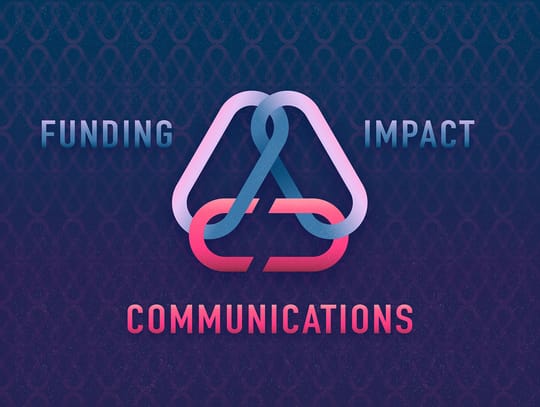Article
How Much Should the Social Impact Sector Invest in Communications?
Published
Share

Every so often, when having a conversation with a prospective client or peer in the social purpose space, we hear someone worried about making something look too good, or like their organization is investing too much into marketing or communications that could otherwise support core programs.
“We’re doing really good work and want to do a better job of sharing our impact and telling our story. But we want to make sure it doesn’t look too good, or like we’ve invested too much into our communications instead of our programs.”
Every time we hear this, a red warning light flashes and our entire studio goes silent. Actually, when this happens we take a deep breath and begin the process of sharing our perspectives on why this is a misguided fear, and actually a sign of an unhealthy culture around communications, brand, and overhead within an organization.
Let’s take a moment to apply this same line of thinking to a profit-driven brand like Apple, Nike, or Tesla. Could you imagine a C-level leader at any of these brands worried that their next campaign, website, or product launch might look “too good” or like they invested “too much” into their marketing? After all, every dollar spent on marketing is a dollar not spent on developing their core product or service. To take it a step further, spending on staff, infrastructure, equipment, or research is also money that could go to core product or service development. So why not cut there too?
Of course, successful organizations across the world understand how important it is to invest in branding and communications, but many organizations in the impact space continue to be a step behind, stuck in the broken mindset of excessively low overhead, fear-based thinking, and a scarcity mindset.
We’ve written before about our perspectives that marketing and communications should be considered core to program development instead of overhead, and respected organizations like GiveWell have data to show that nonprofit effectiveness and overhead percentage are not strongly correlated. In fact, some of the most effective nonprofits have statistically higher “overhead,” investing in the support and structure needed to create an effective, sustainable culture, leading to more impact at a greater scale.
World-class companies and organizations understand that long-term success requires investing in their team (including competitive, market-rate salaries), their infrastructure, and their brand through effective, strategic marketing and communications.
So, back to the key concern at hand. Will your true supporters and community members judge, criticise, or abandon your cause because you’re investing too much in marketing and communications?
In our experience, no. We’ve launched a number of new brands, marketing campaigns, annual reports, websites, and communications pieces for nonprofits, foundations, and social enterprises. Not once has a client come back to us with negative feedback from their community on the investment made. Mostly, people are just excited to see an organization they support stepping their communications up and allowing their community to engage more deeply with their brand.
Your supporters believe in your mission, and more than anything they want to know how their support has lead to positive impact. Without effective marketing and communications, they will feel like they are in the dark, or worse, let down.
More than ever, foundation funders and grant writers are demanding proof of impact as a prerequisite to providing new or follow-up funding. Leading funders and nonprofits are starting to understand the need and value of solid communication as a core component of a successful program and building budget directly into the program for it.
Unprofessional, rushed, or underfunded marketing initiatives communicate that your organization is not mature or competent enough to allocate the time, energy, and money into essential marketing and storytelling.
The real question for your audience, conscious or subconscious, then becomes “What else are they ineffective at as an organization?”
The social purpose space pays a lot of lip service to “shared learnings” and “transparency,” but often really good work, knowledge, and success stories are siloed within an organization or inadequately shared with the broader social impact community due to ineffective or nonexistent communications efforts.
Investing in marketing and communications is an essential step in the upward spiral of success. Create a sustainable culture of positive impact, communicate that impact to your community of supporters and funders as a return on their investment in your organization, receive additional funding and support, and use that support to create impact at scale. Without the critical communications piece, you may find yourself stuck or stagnant.
Ask not “Does this look too good?” but “Does this look good enough?”